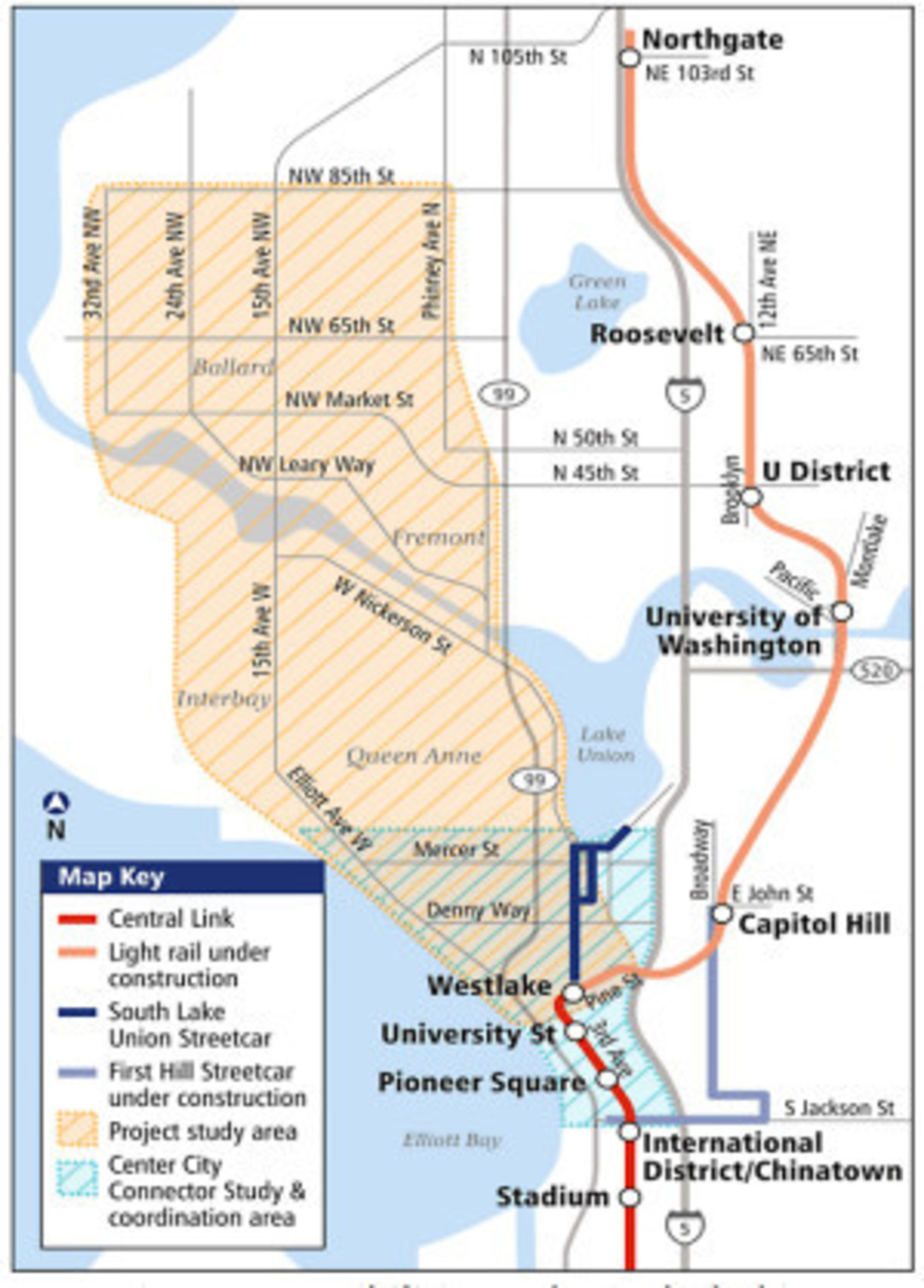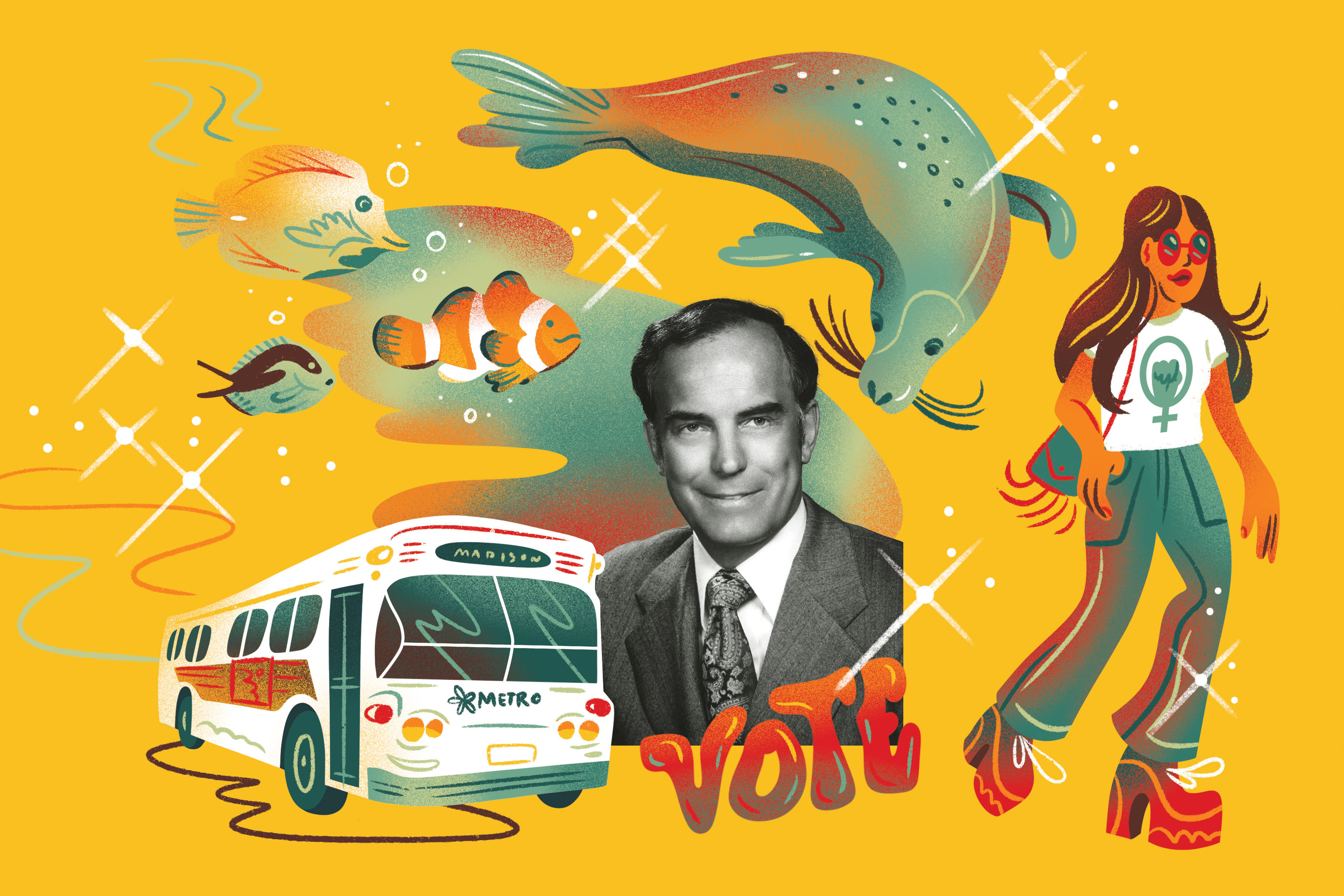The $15 Billion (Light Rail) Question

Caffeinated News
1. State house finance committee chair representative Reuven Carlyle (D-36, Ballard), continues to challenge the Democratic party status quo on Sound Transit's $15 billion ask.
It's not that Carlyle is against the $15 billion ask.
To the contrary, he's adamant about the maddening fact that without the full $15 billion in funding, inner-city Seattle lines will get deprioritized in favor of completing the Everett-to-Tacoma spine, putting Seattle voters (the bloc that controls the fate of Sound Transit—and the bulk of its funding) in the terrible spot of rejecting the package.
"The best land-use planners in the world," Carlyle says, "have reached overwhelming consensus that density-first development of rapid transit is the most valid approach."
"Virtually every successful development went from the core out, versus the spine approach. I'm deeply questioning that Seattle is the last dollar in."Noting that the West Seattle–to–Ballard line beats out Tacoma in terms of ridership, Carlyle says he's "concerned that by building out the low ridership parts of the spine ahead of high-ridership density, [ST] endangers both the vote and usage—and ultimately does a disservice to our long-term objective of broad-based regional support. You build support," he tells Fizz, "by usage. Large numbers of people get high value quickly as opposed to long, drawn-out time frames that distract from a more intense value up front."
Citing Portland's light rail as an example, he concludes: "Virtually every successful development went from the core out, versus the spine approach. I'm deeply questioning that Seattle is the last dollar in."

While getting the full $15 billion is important, Carlyle thinks it's equally important that ST finds the right sources. He says the new property tax aspect of ST's ask—in addition to extending Sound Transit’s current 0.5 percent sales tax and the 0.8 percent motor vehicle excise tax (which make up the bulk of the funding)—sets a bad precedent by locking in the property tax to the transit funding mix. Carlyle, with the state supreme court watching, is cognizant of the K–12 mandate.
In response to governor Jay Inslee's recent line-in-the-sand statement on the necessity of the $15 billion, Carlyle took to Facebook this weekend to make the case for 21st Century transportation funding ideas, suggesting things like a vehicle-miles-traveled tax or an employer head tax.
As to the aforementioned Seattle vs. regionalism debate, note Carlyle's pointed exclamation mark about the pending Ballard line, which could cost as much as $3.6 billion.
Carlyle wrote:
I am absolutely 110 percent committed to and fighting for Sound Transit 3—especially to Ballard! Yet I also believe that instead of essentially asking the Legislature to relinquish part of the state education property tax at the exact moment we are under contempt from the Supreme Court for underfunding public education, Sound Transit should use this historic opportunity as a modern region to design a 21st Century progressive funding system. I'm simply trying to replace the $2.2B property tax portion of Sound Transit's request for $15B with a combination of usage-based policy ideas that might include vehicle miles travelled, regional variable tolling, $50 annual employer tax exempting small business, regional gas tax, motor vehicle excise tax and other ideas. We can have both quality education and transportation systems if we're willing to make even modest structural changes to the most unfair, economically inefficient tax system in the nation. We are stronger together.
2. In case you missed it—it was posted over the weekend—we did a batch of interviews with several applicants who are seeking the city council "caretaker" spot to finish out Sally Clark's term.
Clark, who is not seeking reelection, resigned earlier this month to take a job at UW as director of regional and community relations.
We spoke with the handful of applicants that I imagine Las Vegas would put astronomical odds on for landing the gig, including a cellist and male model with jiujitsu training.
It was hardly a formal poll, but by interviewing the Joe and Jane Public candidates rather than the insiders, we did get a glimpse of the mood in the city right now. Among the zeitgeist questions: Murray or Sawant? Are pod apartments good for the city? Does the city need more parking or more bike lanes?
A sample answer: "I like them both for different reasons—which makes this a hard decision, but I’ll have
to pick Sawant—she’s really shaking things up. I love how she’s advocating for people who are struggling in our city."
The council, after confabbing one on one and behind closed doors Friday—and presumably this weekend—is going to publicly vote on a list of finalists today.
3. Speaking of Mayor Murray, one thing I forgot to mention last week about his appearance at Town Hall where he spoke alongside urbanist all-star Janette Sadik-Kahn, the former New York City transportation director, was his defensive (or cocky?) snippet about affordable housing.
Pressed during the audience Q&A about affordable housing (the hot-button issue is intertwined with transportation, which was the actual subject of the Town Hall event where SDOT director Scott Kubly was also on stage), Murray went in the opposite direction of his staff.
For months now, perhaps to lower expectations, Team Murray has been shunning comparisons between last years successful $15 minimum wage task force and this year's housing affordablity task force.
However, on stage at Town Hall, Murray confidently made that very analogy saying that while things on the committee—the Housing Affordability and Livability Agenda task force—may appear to be bogged down now, just like the $15 committee, the group will emerge at the final hour with a big deal compromise.
I have heard that committee members are currently frustrated with the lack of rigor and attention that staff is giving to the idea of building affordable housing on publicly owned land.




